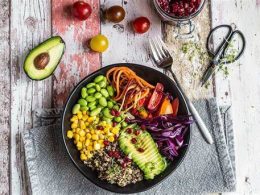Are you tired of being lured in by the convenience trap? It’s easy to succumb to the temptation of processed foods that promise quick and easy meals, but at what cost to our health and longevity? In this blog post, we’ll explore how choosing real, whole foods can not only improve our physical well-being but also enhance our overall quality of life. Get ready to break free from the convenience trap and discover a new way of nourishing your body for optimal health and longevity!
The Convenience Trap
The conveniences of processed and packaged foods are all around us. They’re quick and easy to prepare, and they often require no cooking or cleanup. But these foods come at a cost to our health.
Processed foods are often high in sugar, salt, unhealthy fats, and artificial ingredients. These ingredients can lead to weight gain, chronic disease, and other health problems.
Whole foods, on the other hand, are minimally processed and free of harmful additives. They offer many health benefits, including weight loss, improved digestion, and reduced risk of chronic disease.
When choosing foods for optimal health and longevity, it’s important to choose real, whole foods over processed convenience foods. By making simple changes to your diet, you can improve your overall health and well-being.
The Dangers of Processed Foods
Processed foods are those that have been altered from their natural state, usually for the purpose of extending their shelf life or making them more convenient to eat. They typically contain added sugar, salt, fat, and chemical additives.
While processed foods can be a part of a healthy diet, they should be consumed in moderation. The overconsumption of processed foods has been linked to a number of health problems, including obesity, type 2 diabetes, heart disease, and certain types of cancer.
Processed foods are often high in calories but low in nutrients. This can lead to weight gain and an increased risk for developing chronic health conditions. When choosing processed foods, it’s important to read nutrition labels carefully and choose items that are lower in sugar, salt, and unhealthy fats.
It’s also best to limit your intake of highly processed convenience foods and instead focus on eating more whole foods like fruits, vegetables, lean proteins, and whole grains. By making small changes to your diet, you can enjoy the occasional processed food while still keeping your overall health in mind.
How to Choose Real, Whole Foods
When it comes to food, there are many options available. However, not all foods are created equal. Real, whole foods are those that are minimally processed and contain all of the essential nutrients needed for optimal health and longevity. Here are a few tips on how to choose real, whole foods:
1. Shop the perimeter of the grocery store. The outer aisles of the grocery store typically house the freshest and most nutrient-rich foods.
2. Read labels carefully. When shopping for packaged foods, be sure to read the labels carefully. Avoid products that contain artificial ingredients, added sugars, or trans fats.
3. Focus on fresh fruits and vegetables. Fresh fruits and vegetables should make up a large portion of your diet. Choose a variety of colors and types to get the most benefit from these nutrient powerhouses.
4. Make meals from scratch using whole ingredients whenever possible. Homecooked meals made with real, whole ingredients tend to be more nutritious than those that come from a box or restaurant menu.
5. Incorporate healthy fats into your diet. Healthy fats such as olive oil, avocados, and nuts can help improve satiety and nutrient absorption while also providing numerous health benefits.
The benefits of Real, Whole Foods
If you’ve been eating a Standard American Diet (SAD), it’s likely that the majority of your food choices have been convenience foods. These are foods that are quick and easy to prepare, and require little to no cooking skills. While they may save you time in the short-term, they come at a cost to your health in the long-term.
processed foods are devoid of nutrients, they contain harmful chemicals and additives, and they promote inflammation in the body. Inflammation is at the root of many chronic diseases, including heart disease, cancer, and Alzheimer’s disease.
On the other hand, real, whole foods are packed with nutrients that support optimal health. They contain fiber, antioxidants, vitamins, minerals, and phytochemicals that keep your body functioning properly. Eating a diet rich in real, whole foods can help reduce your risk of chronic disease and promote longevity.
So how do you make the switch from convenience foods to real, whole foods? Start by shopping for groceries at farmers markets or local grocery stores that sell fresh produce. Plan ahead by preparing meals in advance so you have healthy options available when you’re short on time. And cook more meals at home using simple recipes made with whole ingredients.
Making small changes in your diet can have a big impact on your health. By choosing real, whole foods over convenience foods, you’re making an investment in your health that will
Recipes for Real, Whole Foods
Healthy, whole foods are the key to a long and prosperous life. Here are some recipes to help you get started on your journey to optimum health:
1. Roasted vegetables: Preheat oven to 375 degrees. Cut vegetables into bite-sized pieces and place on a baking sheet. Drizzle with olive oil and season with salt and pepper. Roast for 20-30 minutes, stirring once or twice, until vegetables are tender and lightly browned.
2. Quinoa salad: Cook quinoa according to package instructions. In a large bowl, combine cooked quinoa with diced cucumber, tomatoes, Kalamata olives, feta cheese, and a simple vinaigrette dressing. Season with salt and pepper to taste.
3. Salmon burgers: In a food processor, combine cooked salmon, bread crumbs, diced onion, egg, lemon juice, and dill weed. Season with salt and pepper to taste. Form into patties and grill or cook in a nonstick skillet over medium heat until browned and cooked through. Serve on whole wheat buns with lettuce, tomato, and avocado slices.
4. Vegetable soup: In a large pot or Dutch oven, sauté chopped onion in olive oil over medium heat until softened. Add garlic and sauté for an additional minute. Stir in diced carrot, celery, potatoes, kale or other greens, vegetable broth or water, canned tomatoes (undrained
Conclusion
Eating real, whole foods is the key to long-term health and longevity. By breaking free from the convenience trap and focusing on eating high quality, nutrient-dense foods that are as close to their natural state as possible, you will be able to maximize your nutrition intake while reducing calories at the same time. This kind of diet has been linked with numerous health benefits such as improved immunity, increased energy levels and reduced risk of chronic disease. With a little effort and some smart shopping strategies, anyone can make healthier food choices for an overall more balanced lifestyle.











